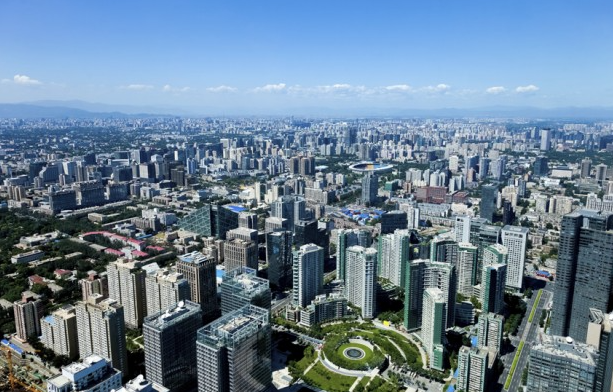Global Trade Review - ASIA / 20-01-16 / BY FINBARR BERMINGHAM Outbound policy loans from China rocketed up in the final quarter of 2015, as lending along the One Belt One Road route continued to gather pace.
Outbound policy loans from China rocketed up in the final quarter of 2015, as lending along the One Belt One Road route continued to gather pace.
New research from the merchant banking firm Grison’s Peak shows that outbound policy loans, along with outbound M&A and equity investments, reached their highest levels since it started gathering data seven years ago.
There were 24 government loan agreements in the final three months of the year, up 36.8% on the previous quarter, with loans to official One Belt One Road (OBOR) countries representing 46% of the total. However, while African nations have not been officially included on state-produced OBOR maps, it has been speculated that Africa will represent a new “spoke” on the route, evidenced in the fact that 42% of government loans were pledged to Africa over the period.
The majority of the loans were in the infrastructure, renewable energy and technology sectors and were on a government-to-government basis. However, experts have been urging the private sector to start preparing for opportunities to partner with Chinese firms and banks on Silk Road investments.
“It’s mainly driven out of China [corporate involvement] for now, largely because the number of projects have been greatest in places like Kazakhstan and Pakistan. These are government-to-government deals and tend to be done on a quicker basis. It will take more time for state or private sector to do commercially-driven deals. China will quite rightly focus on the easiest places first, where it has less competition,” Ben Simpfendorfer, managing director at advisory firm Silk Road Associates told GTR in an interview this week.
“Where it starts to get interesting is in countries such as India, a huge ‘Belt and Road’ country, where Chinese companies have less experience and face bigger resistance to their business models, such as bringing in cheap labour. It’s here that international companies will find greater synergies and should already be talking to their Chinese partners about Indian opportunities.”
The OBOR initiative was a huge topic of conversation at this week’s Asian Financial Forum in Hong Kong, where representatives from various governments were queueing up to signal their interest in being involved.
Vincent Lo, the chairman of the Hong Kong Trade Development Council, said that he envisaged the Special Autonomous Region of China becoming an important hub in processing and facilitating trade and projects stemming from OBOR. “At first I was sceptical. But it is a logical development for the world,” he said. “The challenge is how to put it into practice.”
Hong Kong, he said, has the infrastructure and human resources required to formulate the lending and investment documentation, while its extensive port facilities mean that it could be an important hub on the Maritime Silk Road.
Lending along the route is expected to ratchet up over the course of 2016, particularly as the newly-inaugurated Asian Infrastructure Investment Bank (AIIB) starts lending towards the end of the year.
PRESS ARTICLES 2016
- 7 November 2016 China’s M&A deals in UK hit record in mid-2016
- 24 October 2016 Nearly $40bn in Chinese acquisitions pushed back by west Premium
- 13 October 2016 China rethinks developing world largesse as deals sour
- CHINA LOANS: Old flame
- 9 August 2016 CCTV Interview at Maritime Silk Road Conference
- August 2016 – FDI Intelligence Unit of the Financial Times
- 6 July 2016 – AIIB and NDB dominate China’s outbound investment
- 9 May, 2016 – Financial Times – James Kynge How the Silk Road plans will be financed
- May/June 2016 – If you build it, will they come?
- 1 April 2016 – China’s ambitions for Asia show through in ‘Silk Road’ lending
- 20 January 2016 – One Belt One Road sends Chinese outbound lending to 7-year high
PRESS ARTICLES 2015
- 12 December 2015 China to aid indebted African sovereign
- 25 November 2015 China’s New Silk Road Dream
- 22 October 2015 – Chinese investment along One Belt One Road revealed
- 16 October 2015 – Why we should hold out a friendly hand to China
- 10 Sep 2015 – Bangladesh favours Japan for port and power plant, in blow to China
- China Takes Its Debt-Driven Growth Model Overseas, 6 August, 2015
- 1 July 2015 – Massive Chinese lending directed to Silk Road
- 15 June 2015 – Chinese overseas lending dominated by One Belt One Road strategy
- 31 May 2015 – Chinese policy banks perform better since launch of Belt and Road Initiative
- 31 May 2015 – Belt and Road Initiative – Xin Hua
PRESS ARTICLES 2014
- 30 September 2014 – The signs are that Balfour Beatty has not yet reached the bottom – The Independent – Ben Chu
- 26 to 28 September 2014 – Terra Parzival Michaelmas 2014 Council Meeting!
- 28 August 2014 Zhang Chunyan in London and Zheng Yangpeng in Beijing – China Daily Europe
- 16 July 2014 – Nationale Suisse
- 27 February 2014 – Ukraine a setback in China’s eastern Europe strategy – Financial Times – James Kynge
- 20 February 2014 – Could China’s credit hangover prove to be a headache for HSBC? – The Independent – Ben Chu